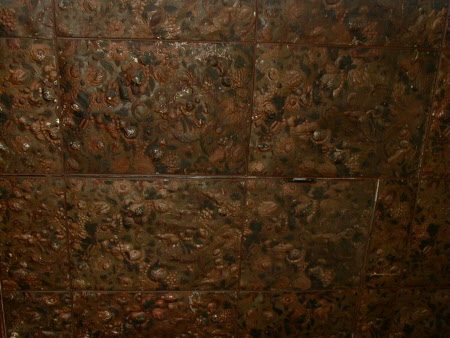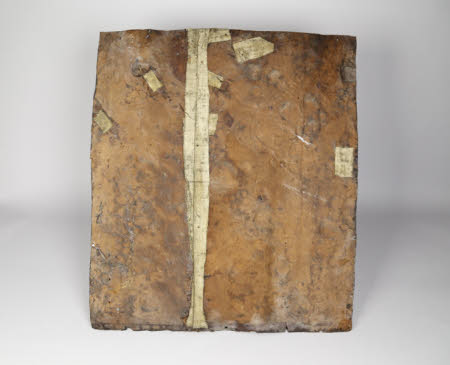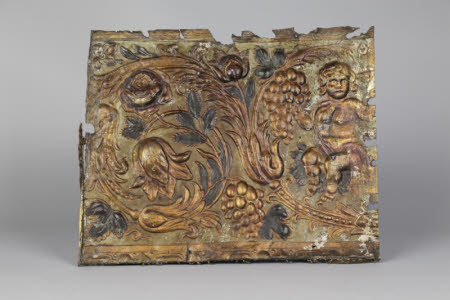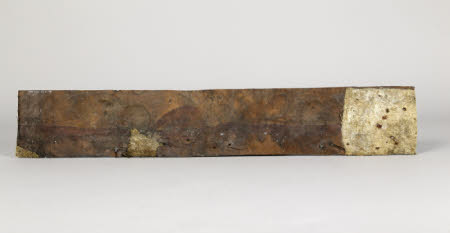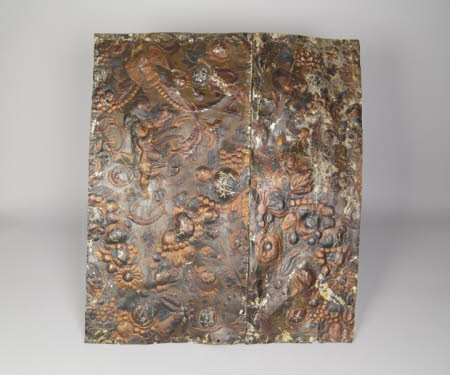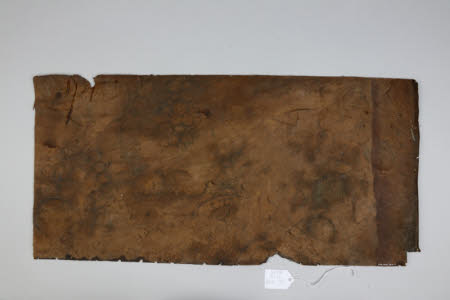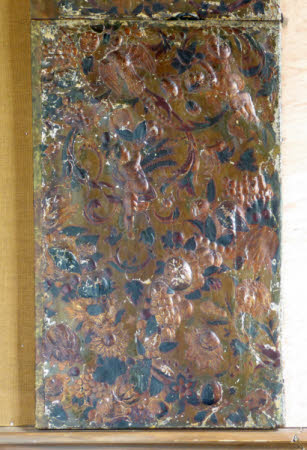Leather panel
workshop of Martinus van den Heuvel (ca. 1647-1711)
Category
Architecture / Features & Decoration
Date
Unknown
Materials
Leather
Place of origin
Amsterdam
Order this imageCollection
Dyrham, Gloucestershire
NT 453483
Summary
342 embossed leather panels, friezes, patches and strips on walls in East Hall and also in 8a store.
Full description
Four rooms appear to have been covered with gilt leather during William Blathwayt’s time. From the 1710 inventory 2 rooms are specifically mentioned as having gilt leather hangings namely the Vestibule and the Great Room above Stairs on the first floor. The Gilt Leather Parlour is not recorded as having gilt leather hangings in either 1703 or 1710 but they are present in 1742. Many assumptions could be made, the obvious being the name of the room might have meant omitting the obvious or that they had been removed! Boxes of presumably spares or damaged panels are also recorded. In addition to the leather wall hangings, there were gilt leather chairs, couch and 2 gilt leather screens. A folding screen covered with matching leather survives but it is difficult to say when this was made up although one is mentioned in the inventory of 1839. (453066). In a letter of 5 July 1702 Blathwayt writes to his agent at Dyrham “ There are 100 less 7 skins of gilt leather for the Great Room (upstairs on the piano nobile) which are to be fitted up as soon as may be and the opportunity of wet weather to be taken. … This is very good weather to putt up the Gilt Leather in the Vestibule if Mr Sheldon’s man comes time enough” The extant gilt leather hangings that survive at Dyrham consist of hangings in the Vestibule and hangings from the Gilt Leather Closet which are in store. The wallhangings consist of a repeat pattern known as the Bacchus and Ceres pattern. This pattern was made at the Compagnie van Goudleermaken workshop in Amsterdam by the gilt leather maker Martinus van den Heuvel (ca. 1647-1711) and dates from the 1660’s. By the time the panels were installed at Dyrham the pattern was already over 30 years out of fashion.
Provenance
Indigenous collection purchased by Ministry of Works in 1954 and given to Dyrham Park in 1961.
Makers and roles
workshop of Martinus van den Heuvel (ca. 1647-1711), manufacturer
